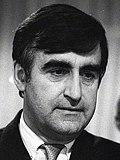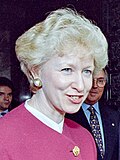
Back Kanadische Unterhauswahl 1993 German Elecciones federales de Canadá de 1993 Spanish Élections fédérales canadiennes de 1993 French Elezioni federali in Canada del 1993 Italian 1993年カナダ総選挙 Japanese Канадские федеральные выборы (1993) Russian 1993年加拿大联邦大选 Chinese
| ||||||||||||||||||||||||||||||||||||||||||||||||||||||||||||||||||||||||||||||||||||||||||||||||
295 seats in the House of Commons 148 seats needed for a majority | ||||||||||||||||||||||||||||||||||||||||||||||||||||||||||||||||||||||||||||||||||||||||||||||||
|---|---|---|---|---|---|---|---|---|---|---|---|---|---|---|---|---|---|---|---|---|---|---|---|---|---|---|---|---|---|---|---|---|---|---|---|---|---|---|---|---|---|---|---|---|---|---|---|---|---|---|---|---|---|---|---|---|---|---|---|---|---|---|---|---|---|---|---|---|---|---|---|---|---|---|---|---|---|---|---|---|---|---|---|---|---|---|---|---|---|---|---|---|---|---|---|---|
| Opinion polls | ||||||||||||||||||||||||||||||||||||||||||||||||||||||||||||||||||||||||||||||||||||||||||||||||
| Turnout | 70.9%[1] ( | |||||||||||||||||||||||||||||||||||||||||||||||||||||||||||||||||||||||||||||||||||||||||||||||
| ||||||||||||||||||||||||||||||||||||||||||||||||||||||||||||||||||||||||||||||||||||||||||||||||
 The Canadian parliament after the 1993 election | ||||||||||||||||||||||||||||||||||||||||||||||||||||||||||||||||||||||||||||||||||||||||||||||||
| ||||||||||||||||||||||||||||||||||||||||||||||||||||||||||||||||||||||||||||||||||||||||||||||||
The 1993 Canadian federal election was held on October 25, 1993, to elect members to the House of Commons of the 35th Parliament of Canada. Considered to be a major political realignment, it was one of the most eventful elections in Canada's history. Two new regionalist parties emerged, finishing second and third in seat count. Most notably, the election marked the worst defeat for a governing party at the federal level and among the worst ever suffered by a governing party in the Western democratic world. In a landslide, the Liberal Party, led by Jean Chrétien, won a majority government.
The election was called on September 8, 1993, by the new Progressive Conservative Party (PC) leader, Prime Minister Kim Campbell, near the end of her party's five year mandate. When she succeeded longtime Prime Minister Brian Mulroney and assumed office in June, the party was deeply unpopular due to the failure of the Meech Lake and Charlottetown Accords, the introduction of the Goods and Services Tax, and the early 1990s recession. The PCs were further weakened by the emergence of new parties that were competing for its core supporters. Campbell's initial efforts helped the party recover somewhat in pre-election polls before the writs were issued. However, this momentum did not last, and the Progressive Conservatives suffered the most lopsided defeat for a Canadian governing party at the federal level, which was also the worst ever suffered by a governing party in the Western democratic world, losing all but 2 of their 156 seats and more than half of their vote from 1988. The Progressive Conservatives also launched a controversial attack ad during the campaign.
The Western-based Reform Party won over many traditional PC voters, particularly social conservatives, alienated Western Canadians, and fiscal conservatives who were dissatisfied with the Mulroney government's deficit spending and tax increases. The popularity of Preston Manning, and profound Western discontent with the PCs, led the Reform Party to replace the PCs as the major right-wing party in the Commons, although it won only one seat east of Manitoba. Though the Progressive Conservatives recovered slightly in the 1997 election, they lost seats in 2000 and would never be a major force in Canadian politics again. In 2003, the Progressive Conservative Party disappeared entirely when it merged with the larger Canadian Alliance (successor of the Reform Party) to create the new Conservative Party of Canada.
The sovereigntist Bloc Québécois won almost half of the popular vote in Quebec and became the Official Opposition. To date, this is the only time that a party committed to the political secession of a region of Canada has become the Official Opposition of Canada. The traditional third party, the New Democratic Party (NDP), collapsed to nine seats only one election after having what was then its best performance. It remains the NDP's worst result in a federal election since its formation and the only election where the party polled fewer than one million votes.
The turnover of MPs was stark and unprecedented for Canadian politics, with 132 MPs losing their seats. In total, 194 out of 295 ridings changed hands.
- ^ Pomfret, R. "Voter Turnout at Federal Elections and Referendums". Elections Canada. Retrieved January 11, 2014.
Cite error: There are <ref group=lower-roman> tags or {{efn-lr}} templates on this page, but the references will not show without a {{reflist|group=lower-roman}} template or {{notelist-lr}} template (see the help page).






